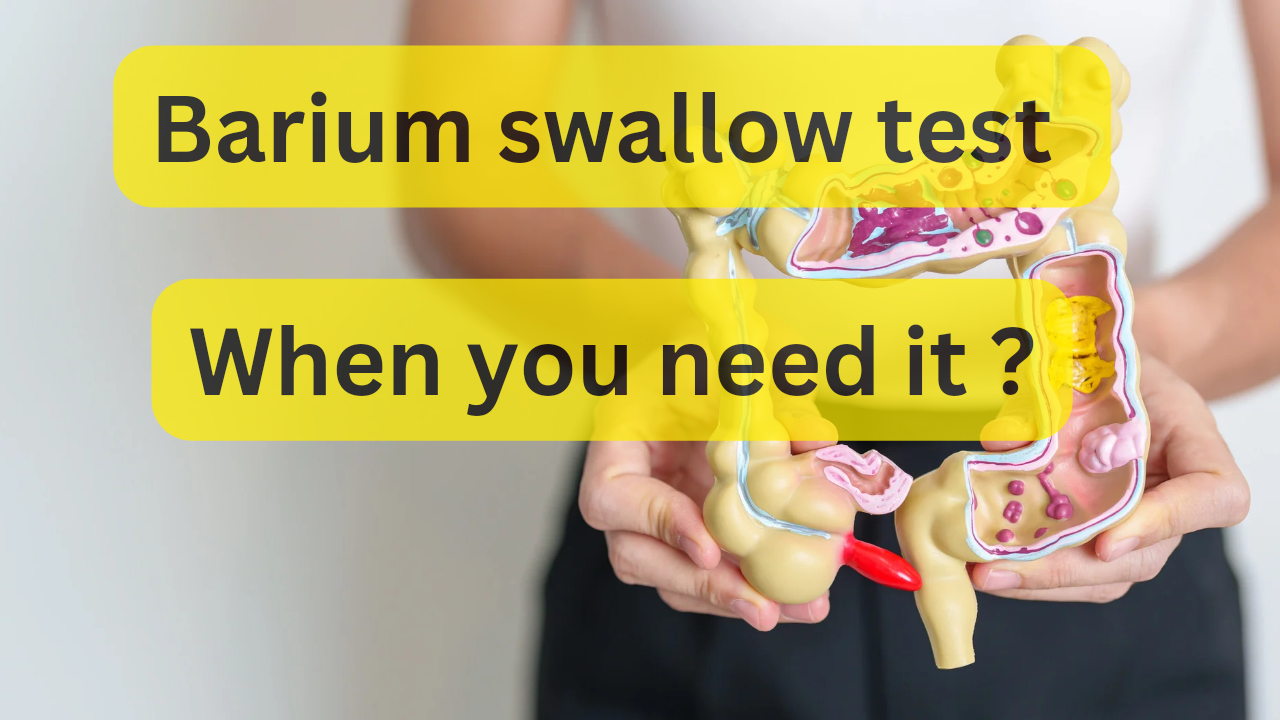A barium swallow test is a diagnostic imaging procedure used to evaluate the structure and function of the esophagus and sometimes the stomach and small intestine.
This test helps identify issues like swallowing difficulties, reflux, blockages, or structural abnormalities.
Here is the Barium swallow test procedure:
- Patients are usually asked not to eat or drink for about 8-12 hours before the test.
- The patient is asked to remove any jewelry, dentures, or metallic objects that might interfere with imaging.
- The patient drinks a barium sulfate solution, a thick, white, chalky liquid that coats the lining of the esophagus and upper gastrointestinal (GI) tract.
- The technician will take initial X-rays or fluoroscopic images as you swallow the barium. This may include images of you swallowing in various positions (e.g., standing, lying down) to see how well the barium moves through the esophagus and into the stomach.
- After test, drink plenty of fluids to help flush the barium from your digestive system, as it can cause constipation.
This test is recommended to evaluate swallowing difficulties, unexplained chest or abdominal pain, gastroesophageal reflux disease (GERD), ulcers, tumors, structural abnormalities, or other issues within the esophagus and upper GI tract.
The barium solution has a chalky texture and a slightly bitter taste. It’s not typically pleasant, but you’ll only need to drink a small amount during the procedure.
1. You’ll be given a chalky barium liquid to drink, which coats the lining of your GI tract.
2. X-ray images will be taken as you swallow the barium, allowing the radiologist to observe its movement and detect any abnormalities.
